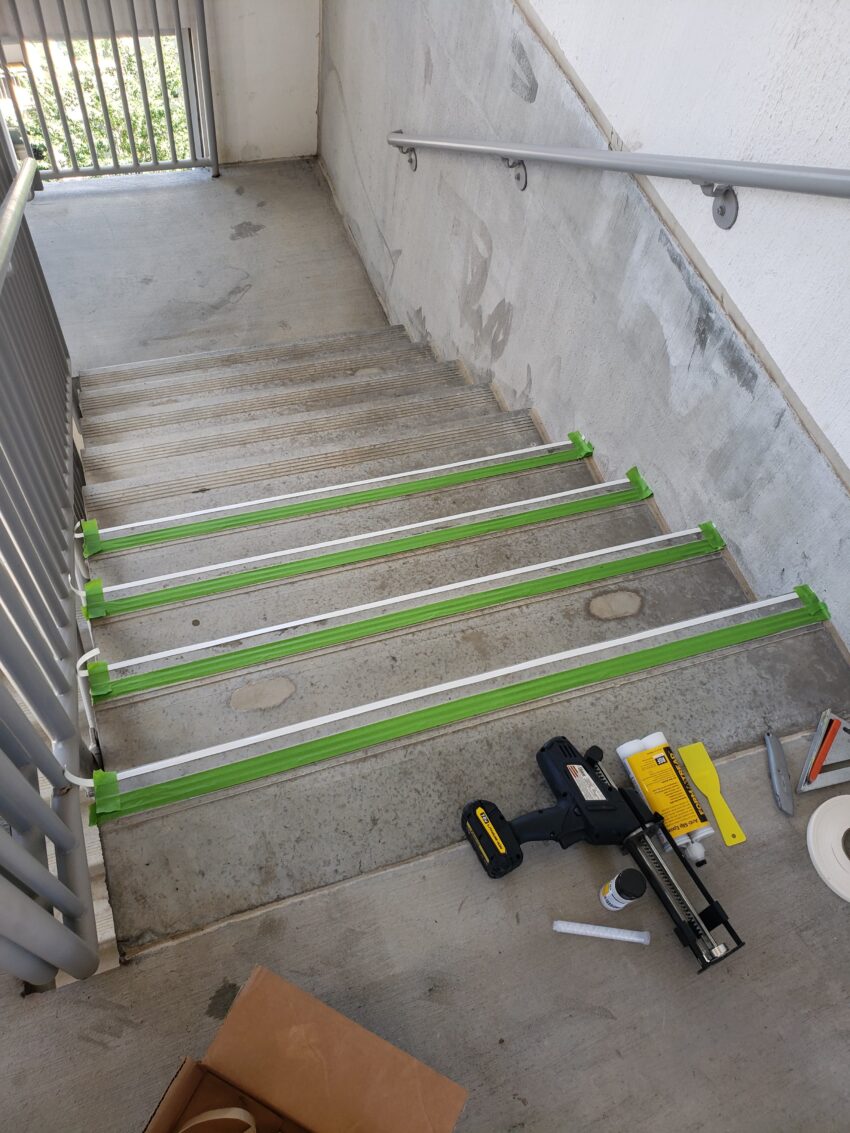In the nation’s senior living communities, stairs are very prevalent even when elevators and ramps are available. The challenge is that stairs can present a slip and fall hazard, especially when wet or slippery, an issue which is only elevated for those who are vision and mobility challenged. Traditional short-term methods of deterring slip and fall incidents on stair treads, however, can become very costly over time and still must comply with all relevant regulations.
To be readily accessible and usable by individuals with disabilities, senior living facilities must comply with the 2010 Americans with Disabilities Act (ADA) Standards for Accessible Design, which applies to newly designed and constructed or altered state and local government facilities, public accommodations, and commercial facilities.
It is also vital to provide a clear visual contrast on stair steps to improve safety since today almost 20 million Americans — 8 percent of the U.S. population — have visual impairments, which is a leading cause of loss of independence among people 65 and older. The International Code Council (ICC) A117.1-2017 Standard for Accessible and Usable Buildings and Facilities contains specifications designed to promote accessibility to people with disabilities such as mobility issues and visual impairment. Among these,
For senior living facility managers, complying with important safety codes as well as evaluating the Total Cost of Ownership (TCO) for purchases is critical to acquire items at the lowest long-term cost. When choosing among alternatives in a purchasing decision, buyers often look at the initial purchase price. However, in assessing TCO they should also consider the long-term cost of ownership.
In the case of non-skid adhesive tapes, the initial cost is approximately $1.50 per linear foot. In typical indoor conditions, non-skid tape generally lasts only about six months before requiring removal and reapplication. At this rate, using the tape costs about $3 per linear foot per year or $15 per linear foot over five years.
On exterior stairs or ramps, the expected life of traction tape is only three months but can be considerably shorter particularly in areas exposed to chemicals, moisture, high-temperatures, or high traffic. With a three-month lifespan, tape costs approximately $6 per linear foot per year or $30 per linear foot over five years.
Compare tape to a more durable option: a 100% epoxy-based material that creates a superior tread with an initial cost of $4.50 a linear foot. Designers created the material to last at least five years in most outdoor applications and many more years in indoor applications. The product from Form-A-Tread Company achieves a strong bond to a wide range of stair tread surfaces and contains embedded nonskid aggregate to increase traction.
While the durable tread initially costs more than non-skid tape, it takes just 18 months to reach the breakeven point for indoor use. After 18 months, the Form-A-Tread stair tread saves the facility the cost of reapplying new non-skid tape every six months. In outdoor applications, the material savings is $25.50 over the same period.
For more information: Call 610-994-2138; Email info@rgfmaterials.com; Visit https://form-a-tread.com.

